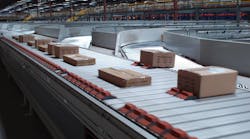When selecting the carrier partners, shippers say rates are their top consideration, according to “Freight Transportation 2013,” the first annual study conducted by NASSTRAC, otherwise known as the National Shippers Strategic Transportation Council. More than half of the shippers surveyed (50.9 percent) gave that answer. However, other priorities are also factored in, including reliability of on-time delivery (47.4 percent) and financial stability of the carrier (18.4 percent). Most said that performance measurement is an important component of their carrier relationships, with 91.5 percent currently benchmarking rates and service.
Shippers said they expect truckload and LTL rates to experience the highest rate increases of all modes, with 47.4 percent of shippers saying LTL rates will increase and 45.6 percent expecting truckload rate increases. Nearly 33 percent expect increases in intermodal rates.
That may be why, although over-the-road trucking continues to be their primary mode of transportation in moving freight through their supply chains, a significant number (37.7 percent) shifted freight to rail/intermodal in the past year. Approximately 42 percent said the primary reason for this modal shift was to save costs. There’s still more change to come, with 57.7 percent anticipating a modal shift in their transportation strategy during 2013.
Nearly 89 percent said their company has a long-term supply chain strategy defined as a minimum of three years. Nearly all shipper participants (96.9 percent) said they have a transportation planning strategy tied directly to their overall supply chain strategy.
There are significant collaboration efforts occurring in the supply chain, particularly among shippers. Nearly 33 percent of shippers in the survey said they collaborate with their providers for productivity gains, and an additional 54.9 percent said they collaborate with other shippers as well as their providers. Shippers find efficiencies and productivity gains through collaboration in these areas: network optimization (38.6 percent), mode shifts (31.6 percent), technology investments and enhancements (21.1 percent), and reducing transit times (18.4 percent).
Outsourcing continues to be a common practice among shippers, but a significant number of shippers (37.2 percent) outsource 25 percent or less of their transportation spend to third-party logistics companies. Another 23.3 percent outsource 26 to 50 percent of their freight spend.
Technology plays an increasingly powerful role in the supply chain and shippers recognize its importance. In fact, an overwhelming majority (81.7 percent) of shippers continue to make investments in transportation technology. Most common technology investments by shippers (42.1 percent) are in transportation management systems (route optimization, and shipment aggregation).



